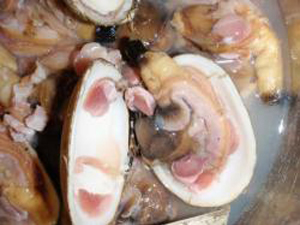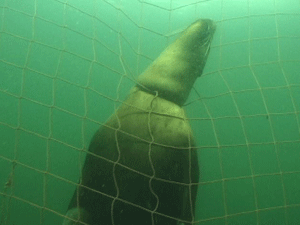Salmon farm is very abundant in North America, especially along the coast of the Pacific Northwest, and over two thirds of salmons consumed in Canada are artificially farmed. Since artificial salmon farms are considered as green and safe, there have not been much articles discussing the environmental concern of the salmon farms.
Salmons are farmed in open-net cages on top of the water column, but the cages and the vast number of fishes can block sunlight from penetrating to the bottom. Therefore, the marine creatures (plankton) underneath the cages cannot get sufficient sunlight as they used to so their photosynthesis rate is reduced. As the number of heterotroph decreases, the local food chain is interrupted so fewer animals can live underneath the salmon cages.
Also, the open-net cages impose no controlling system on salmon waste, so the salmon waste and chemicals can constantly fall down to the seafloor and accumulates there without any physical barriers. One salmon farm can hold thousands of fishes, so they produce enormous amount of waste for the ecosystem underneath. These waste can alter the pH and concentration of ions in water, and different from bird waste, fish waste accumulated at the see floor cannot be manually removed for fertilizers, so the marine creatures at the sea floor may not be able to endure such long-term change. Studies have found that shell fishes underneath the salmon cages have been discovered with high metal ions content.
Another concern about salmon farms is salmon predators, such as seals or sea lions. These animals may not be aware of the cages and are still attracted to the salmons inside, which imposes threats to these big animals. Salmon farmers fear that these predators causing threats to salmons so they may expel the seals or sea lions or shoot them with licensed guns. Also, these animals may accidentally swim into the cages and stuck in it, so a potential salmon feast could turn to a disaster for its predators.




3 responses to “The Other Side of Salmon Farm”